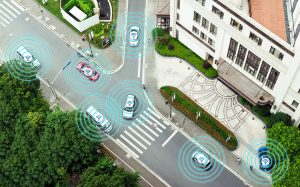Apple decides the roll-out time table.
- While Qualcomm is busy setting the scene for 5G with its latest silicon releases, it is Apple (and to some degree Samsung) that is going to determine the real time-table for 5G getting into the hands of users.
- This is because Apple will sell millions of the next generation of iPhone meaning that if it has 5G included, the market will be in the process of being quickly seeded even if people don’t make use of it yet.
- This would depend on Apple making a full commitment to 5G and deploying it in every phone that it launches next year which I think is very unlikely.
- The problem with this approach is cost as almost all implementations next year are likely to use a discrete 5G radio baseband chip rather than the one chip that does all radios widely in use today.
- The radio transmission and reception system will also need changes to cope with the 5G bands making it more complicated and hence more expensive.
- Together, this means that adding 5G to a handset makes it significantly more expensive to make which is obviously reflected in the price.
- It is here where I think that Apple has a problem because it has already reached the limit in terms of what people will pay for an iPhone.
- This was seen in the somewhat disappointing performance of the iPhone Xs and variants where one of the biggest criticisms was price.
- Since the launch of the original iPhone, Apple has maintained a 70% margin between the BOM (bill of materials) and the price of the device.
- This means that adding 5G to an iPhone creates a dilemma because Apple is widely seen to have already hit the ceiling with pricing.
- This is why I suspect that there will be the normal slate of releases in 2020 which feature LTE and then one or two variants that have 5G added.
- Doing it this way will enable Apple to call out the 5G versions as special (much like folding screen devices) and therefore it will be able to increase the price an maintain the traditional 70% margin.
- Adding 5G to every model would require margin compression (unthinkable) or increasing the price which it looks very much as if the market will not tolerate.
- Having a specific 5G model enables those that want to pay up for the latest and greatest to do so, but also give iOS users the choice.
- Given the state of the roll-out, I suspect that volumes of 5G iPhones in 2020 will be very small and the same is likely to go for Samsung.
- It is not until these vendors include it across the entire range of high-end devices that we will see the technology really begin to take-off.
- This will require an integrated baseband that covers all the radio systems in use which is only just beginning to come to market now.
- Hence, I think that this will happen in 2021 or 2022 meaning that 5G’s rapid take-up is unlikely to happen for a few years yet.
- I still remain pretty sceptical on the use case for 5G as there appear to be very few use cases where 5G represents a real value-added and tangible improvement over 4G (see here).
- Hence, I see the roll-out being pretty slow but it will get there in the end.










Blog Comments
V
December 6, 2019 at 10:51 am
Except that it really is down to Qualcomm. Apple just settled a worldwide dispute with Qualcomm in which they had testified that they preferred working with Qualcomm.
“Priority number one of this relationship with Apple is how to launch their phone as fast as we can. That’s the priority,” and “We have a multi-year agreement with [Apple.] It’s not one, it’s not two, it’s multi-year for our Snapdragon modem. We’re setting no expectations on front end, especially because we engaged it very late,” Amon said. “We re-engaged probably later than both of us would like, and I think we’ve been working together to try to get as much as possible done, and take as much possible advantage of what they’ve done before so that we can actually launch a phone on schedule with 5G.”
So Apple’s timetable is… dependent on Qualcomm, who are busy setting the scene with their 5G silicon.
You say, Apple would deploy 5G in every new model when they launch 5G. This appears to be incorrect – it looks more like Apple will launch it in 2 handsets (Pro models) and not the two lower cost models (SE2 and successor to the 11.)
Yes, the 5G modem is discrete. There’s a RF front end, a package of antennas, tuners and other circuitry that sits between network signals and a device’s cellular modem.
Apple already has two suppliers lined up for the FPCB for antennae.
2020 is predicted to have 2x LTE and 2x 5G models. 2022 is predicted to be a modem design based on the Intel modem group acquisition. 2023 is expected to see the modem integrated into the A-series CPU.
As for use cases, it’s worth separating out what 5G means. There are three types of 5G, mmWave for city centers, mid-band for metro areas, and low band for nationwide use. City centers normally get horrendous signal and speeds. mmWave should alleviate that. Low band peaks at about 225mb/s, about 2-4x LTE speeds. Use of other bands will net about 500-2gb/s. On the whole, more speed has never been something to shy away from, content and apps will fill the void, even if you struggle to think of the use case immediately.
RICHARD WINDSOR
December 10, 2019 at 9:39 am
Yes this is true but what would happen to the adoption of 5G if Apple decided for some reason to wait until 2022 to launch anything… it would slow the adoption… this is why I think that it is Apple that controls the roll out at the end of the day.
I dont see all the Pro models having it but a Pro with and without and a ProMax with and without. Thats the lowest risk option as Apple will have problems raising prices..